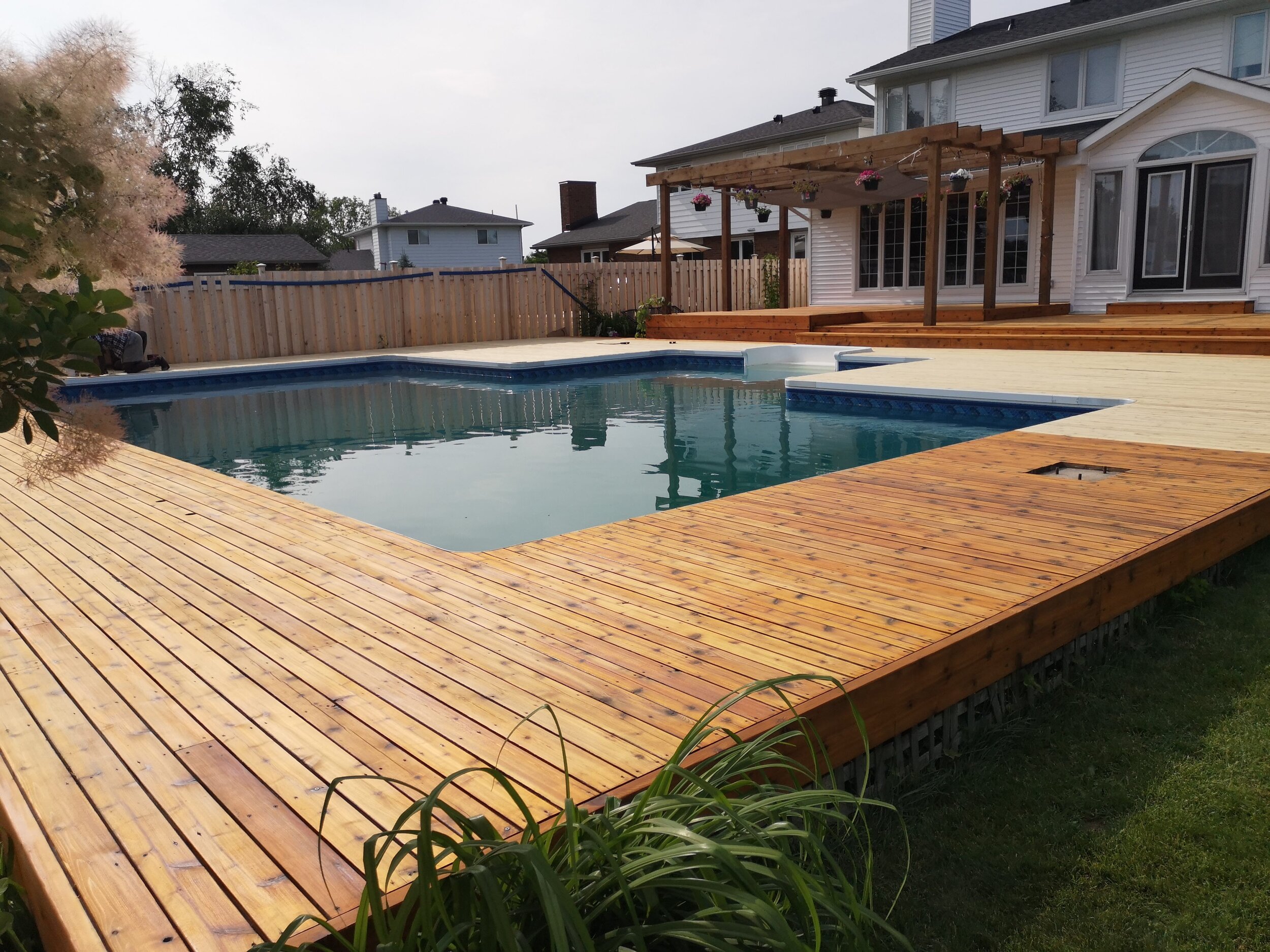
Never Peel Again: The Sand & Stain Blog
Every post, recommendation, and product we discuss is to help you on your journey maintaining your deck, fence, & exterior wood so it never blisters, cracks, or peels.
Never Peel Again: The Sand & Stain Blog
Brand new deck / old faded wood / peeling previous stain / unknown deck finish history—no matter where you are in your wood restoration & maintenance journey, we’re here to help. Scroll & enjoy!
Truth Revealed: Water Based vs Oil Based Stain Against Deck Peeling
Prospective clients often ask me if water based stains are better than oil based stains, or what will last the longest between transparent / semi-transparent / solid stains, or if newer age technology hybrid stains are the way to go.
I always answer that question with another question…
Do you want a peeling problem or a fading problem?
The truth is, it doesn’t matter if they hire me, my competition or do it themselves. The result is the same: either the deck will peel or the deck will fade.
When it comes to wood decks like cedar or pressure treated, there is no such thing as ‘zero maintenance’ unless you want your wood becoming increasingly gray and dirty over time.
The closest thing to maintenance free wood is charclad, Japanese style charred wood building materials and decor from our sister company.
Even after a short time reading our articles, (not to mention the dead giveaway from our tagline, Never Peel Again), you would know that our philosophy fully endorses a fading strategy versus peeling.
Since day one, literally every single business decision and recommendation we make is to ensure your deck will never peel.
You can check out our 3 part Sand & Stain System here, or continue reading about the difference between water based and oil based stain.
How To Maintain Your Deck So It Never Peels
Your deck turned out beautifully. You’ve made memories with your family, hosted gatherings, dined friends, and appreciated a quiet place to escape with a book. You followed the Sand & Stain System to prep and finish your deck. Only that was last year. Maybe even two years ago…
So how do you keep your deck looking fresh and properly protected without pulling out the sanders or hiring contractors every year?
We’ll show you exactly how to get the most out of your deck for as long as possible before sanding again with no blistering, cracking, chipping, or peeling. Guaranteed.
How To Stain A Cedar Deck
The deck has been fully been prepped. Sanding is complete, and so the only thing left to do is the most satisfying step: finishing with your colour of choice for protection, and that undeniable beauty that only a true penetrating oil stain can provide.
There are a few different ways you can tackle this. To save you time, here is how we recommend doing this, and how we have served happy clients for years in our own business. This is is especially important to know, because you’ll be able to get away with stain reapplications without sanding again for years (perhaps forever) using the these tools, techniques, and products.
NOTE: The process for finish staining pressure treated wood is the as staining cedar—however, the prep is very different. If you have pressure treated wood, check out our post 5 Reasons You Should Never Sand Pressure Treated Wood here to make sure you do it right the first time.
How To Sand A Cedar Deck
Sanding is the first step to setting up your deck, fence, or exterior wood project for longevity and success. It may not be the funnest activity you’ll ever do, but if this crucial prep work is done how we recommend it, you won’t have to prep sand it for years—and perhaps ever again.
Unless you have pressure treated wood, do not skip this step. You need to sand your cedar wood deck, even if it’s brand new and hasn’t grayed yet. This is because it has what’s called mill sheen on its surface that even penetrating oils will not be able to soak into as easily as they should.
Remember, the two biggest reasons a deck fails (peels, blisters, cracks, chips, etc.) is because of: 1) poor prep work, and 2) product quality or type. Here’s how we avoid that first reason and how to get it right the first time.
Part 1: What You’ll Need …




